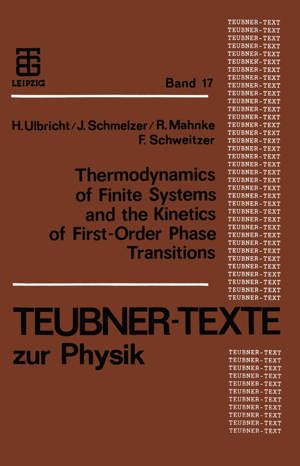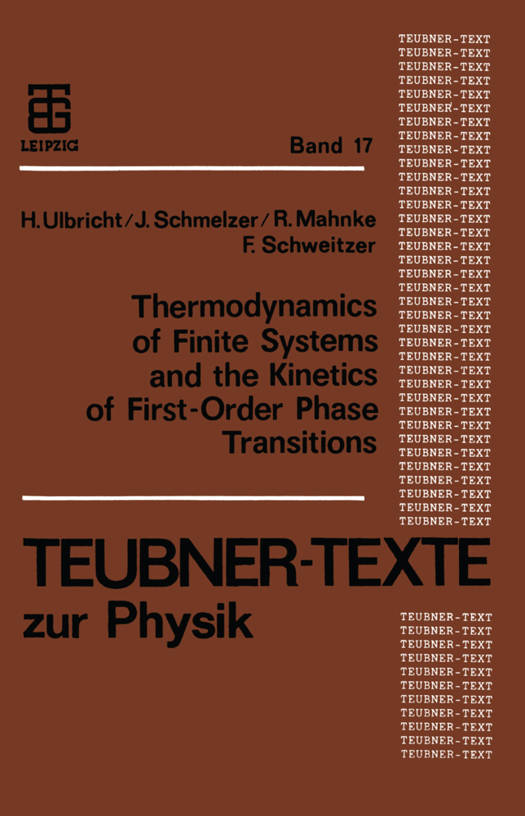
- Afhalen na 1 uur in een winkel met voorraad
- Gratis thuislevering in België vanaf € 30
- Ruim aanbod met 7 miljoen producten
- Afhalen na 1 uur in een winkel met voorraad
- Gratis thuislevering in België vanaf € 30
- Ruim aanbod met 7 miljoen producten
Zoeken
Thermodynamics of Finite Systems and the Kinetics of First-Order Phase Transitions
Jürn Schmelzer, Frank Schweitzer, Heinz Ulbricht
€ 61,45
+ 122 punten
Omschrijving
This booklet is devoted to the thermodynamic and kinetic description of first-order phase transitions. In general, the matter of the world exists in different phases. Normally phase ctlanges take place in ther- modynamic equilibrium, which will be considered here. Typically, the system is rapidly quenched from a one-phase thermal equilibrium state to a nonequilibrium situation. During the so-ca lIed equilibrium phase transformation process the quenched supersaturated system evolves from the nonequilibrium state to an equilibrium one which consists of two coexisting phases. In aseries of books on phase transitions and critical phenomena (DDMB, GREEN, lEBDWITZ, 1972 - 19B3) an immense amount of material to different aspects of ttlis topic is summarized. The other type of phase transitions takes place in systems far from equilibrium. Due to 'the nonequi1ibrium boundary conditions and the flu- xes from the environment into the system the final state of this so- called nonequilibrium phase transition is a stable nonequilibrium si- tuation. Such interesting processes (e. g. pattern formation, multista- bi1ity) do not appear only in physics but also in chemistry, meteorolo- gy, biology and many areas of engineering. Concerning questions in this context we recommend the reader to the monographs by HAKEN (197B), and EBElING, FEISTEl (1982). An overview of the problems of recent interest in this field is given in the Proceedings of the Third International Conference on Irreversible Processes and Dissipative Structures, edited by EBElING and Ul8RICHT (1986).
Specificaties
Betrokkenen
- Auteur(s):
- Uitgeverij:
Inhoud
- Aantal bladzijden:
- 209
- Taal:
- Duits
- Reeks:
- Reeksnummer:
- nr. 17
Eigenschappen
- Productcode (EAN):
- 9783322964281
- Verschijningsdatum:
- 6/12/2012
- Uitvoering:
- Paperback
- Formaat:
- Trade paperback (VS)
- Afmetingen:
- 152 mm x 229 mm
- Gewicht:
- 290 g

Alleen bij Standaard Boekhandel
+ 122 punten op je klantenkaart van Standaard Boekhandel
Beoordelingen
We publiceren alleen reviews die voldoen aan de voorwaarden voor reviews. Bekijk onze voorwaarden voor reviews.








